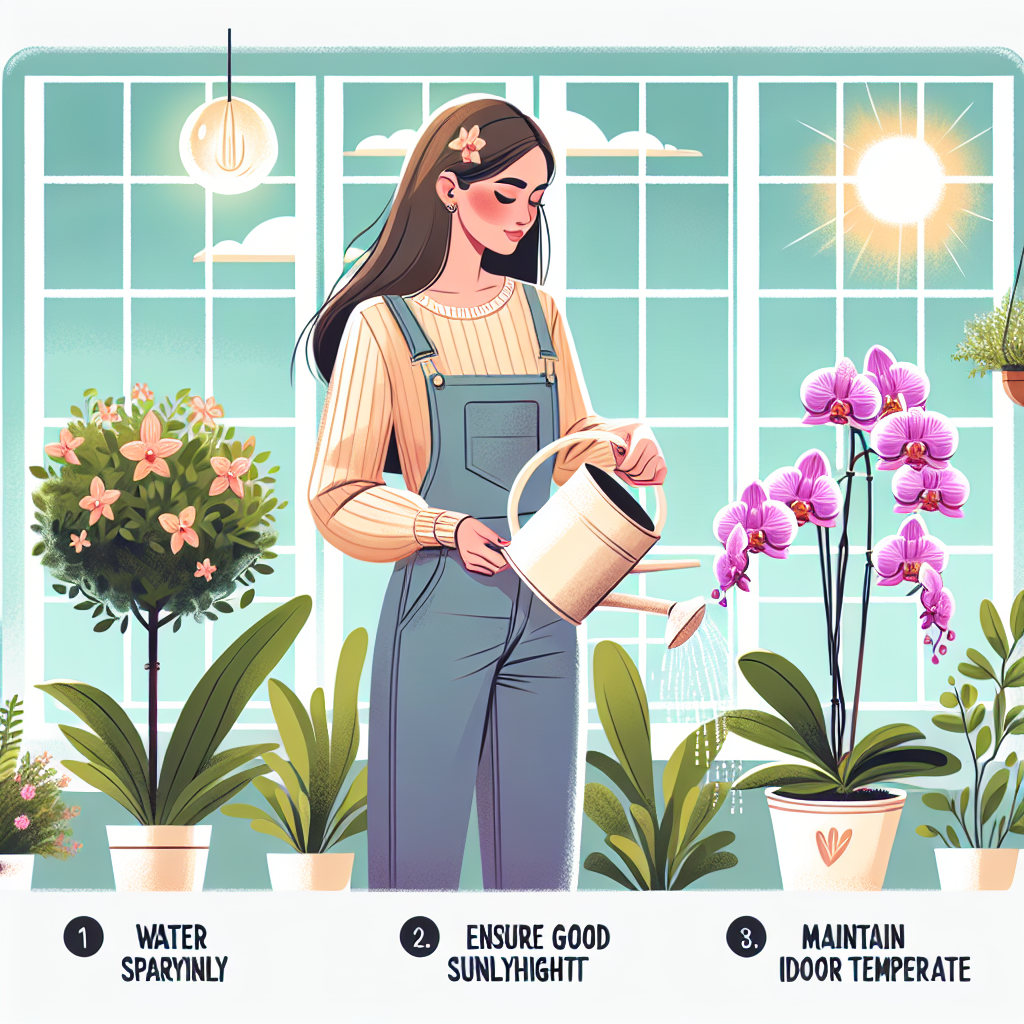
How to look after orchids indoors
How to Look After Orchids Indoors: A Comprehensive Guide
Orchids are one of the most diverse and beautiful families of flowering plants. With their stunning blooms and elegant appearances, they make excellent additions to any indoor space. However, many people find them challenging to care for, leading to common misconceptions about their needs. In this guide, you’ll learn everything you need to know about how to look after orchids indoors, ensuring they thrive and enhance your home’s aesthetic.
Understanding Your Orchid's Needs
Before diving into care specifics, it’s essential to understand the basic needs of orchids. Unlike typical houseplants, orchids require particular conditions to flourish. Recognizing these can help you provide a nurturing environment.
- Light: Orchids need bright, indirect light. Direct sunlight can scorch their leaves, while too little can prevent blooming.
- Water: These plants prefer less frequent watering. Overwatering is a common mistake, leading to root rot.
- Humidity: Most orchids thrive in a humid environment, so consider misting or using humidity trays.
- Temperature: They generally prefer warmer temperatures, ideally between 65°F to 75°F (18°C to 24°C).
- Airflow: Adequate air circulation is crucial for preventing pests and mold.
Choosing the Right Potting Medium
A key factor in effectively looking after orchids indoors is choosing the right potting mix. Unlike traditional potting soil, orchids require specific materials for optimal growth.
- Bark Chips: This is a common potting medium that offers excellent drainage and airflow.
- Sphagnum Moss: This helps retain moisture, making it suitable for more humidity-loving orchid varieties.
- Perlite: Increasing the aeration of the potting medium, perlite can be mixed with other materials.
Always ensure the potting medium is well-draining. Orchids are epiphytic, meaning they naturally grow on trees and are not accustomed to sitting in water.
Watering Your Orchids
Watering is one of the critical aspects when learning how to look after orchids indoors. Here are some guidelines to follow:
- Check the potting medium: Before watering, insert your finger about an inch deep into the medium. If it feels dry, it’s time to water.
- Water thoroughly: When you do water, do so thoroughly until the water drains out of the bottom of the pot. This ensures all roots get moisture.
- Frequency: Typically, orchids need watering every 7 to 10 days, but this can vary based on temperature, humidity, and potting medium.
Providing Adequate Light
Orchids require sufficient light to bloom and grow, yet too much light can cause damage. Here’s how to ensure your orchids receive the correct amount of light:
- Location: Place your orchids near a window where they can receive plenty of indirect light.
- Sheer Curtains: If direct sunlight is unavoidable, use sheer curtains to diffuse the light.
- Artificial Lighting: If natural light is insufficient, consider investing in grow lights specifically designed for orchids.
Maintaining Humidity Levels
Orchids thrive in high humidity levels, often between 40% and 70%. Here are some ways to boost humidity in your indoor space:
- Water Trays: Place a tray filled with pebbles and water beneath the pot to increase humidity without waterlogging the roots.
- Misting: Misting the leaves occasionally can help create a humid environment.
- Humidifiers: Using a humidifier can significantly improve humidity levels, especially in dryer climates or during winter months.
Temperature Requirements
Temperature is another vital factor in ensuring your orchids thrive indoors. Here’s what you should know:
- Day Temperature: Ensure a daytime temperature of 65°F to 75°F (18°C to 24°C) for optimal growth.
- Night Temperature: A drop in temperature at night to around 60°F to 65°F (15°C to 18°C) can promote blooming.
- Avoid Temperature Fluctuations: Keeping your orchids away from drafts, heating vents, and sudden temperature changes will keep them healthy.
Fertilizing Orchids
Orchids do require fertilization, but it's essential to do so in moderation. Here’s how to properly feed your orchids:
- Choose the right fertilizer: Look for specialized orchid fertilizers, typically a balanced, water-soluble product.
- Frequency: Fertilize your orchids every 2 to 4 weeks during the growing season (spring and summer) but cut back in the fall and winter.
- Dilution: Always dilute the fertilizer to half the recommended strength to avoid fertilizer burn.
Pruning and Repotting Orchids
Regular pruning and repotting are essential for maintaining healthy orchid plants. Here are some tips:
Pruning
- Dead or yellow leaves should be cut off to allow the plant to redirect energy into new growth.
- Spent flower spikes can be cut back to the node for potential reblooming.
Repotting
Orchids typically require repotting every 1 to 2 years.
Here’s how:
- Choose the right time: Early spring, as new growth begins, is the best time to repot.
- Gently remove the orchid from its pot and clear the old potting medium from the roots.
- Inspect the roots: Trim away any dead or rotting roots before placing it in the new pot with fresh potting medium.
Common Pests and Diseases
Orchids can be susceptible to various pests and diseases, so it’s crucial to check your plants regularly.
- Mealybugs: Look for white, cottony masses on the stems or leaves. Treat with insecticidal soap or neem oil.
- Scale: Small, hard bumps on leaves can be removed with a soft cloth dipped in alcohol.
- Root Rot: Caused by overwatering, it can be identified by mushy roots. Repotting is essential.
Conclusion
By following these detailed guidelines on how to look after orchids indoors, you can cultivate a thriving plant that will provide beauty and joy for years to come. Remember that patience is key as you learn what works best for your unique growing environment. With love and attention, your orchids will flourish, rewarding you with their exquisite blooms.
“Orchids are a reminder that beauty can bloom anywhere, even in your home." - Unknown
Happy planting!
By Guest, Published on October 26th, 2024